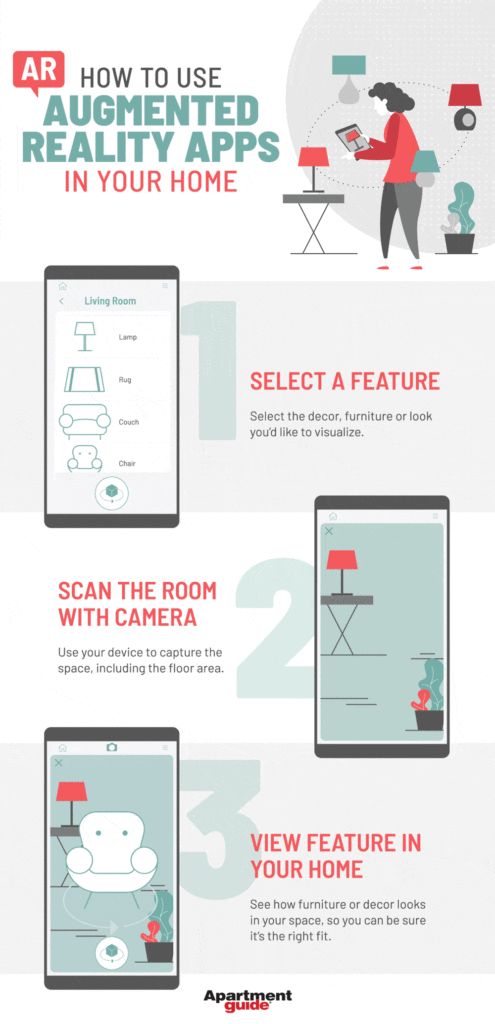Augmented reality is one of the latest technologies that has taken the world by storm. It is a computer-generated experience that overlays digital information onto the real world. In other words, it enhances the real world by adding digital elements that are interactive and immersive. Augmented reality is not just limited to gaming or entertainment but has found its way into various fields such as education, marketing, medicine, and even military training.
The concept of augmented reality has been around for decades, but it was only in recent years that it has gained popularity due to the advancements in technology. Augmented reality is made possible through the use of devices such as smartphones, tablets, and smart glasses. It works by recognizing a marker or a trigger image, which then triggers the digital content to be displayed on the device’s screen. The possibilities of augmented reality are endless, and it has the potential to revolutionize the way we live, work, and learn.
Augmented Reality (AR) is a technology that superimposes a computer-generated image on a user’s view of the real world, thus providing a composite view. It is used in applications such as gaming, navigation, marketing, and education. AR can also be used to enhance existing products or services, such as allowing a user to choose from various options for a product or service. AR can also be used to create new products or services. For example, AR can be used to create virtual tours, allowing users to explore a virtual environment without actually having to be present in the physical environment.

What is Augmented Reality?
Augmented Reality (AR) is an interactive experience of a real-world environment where the objects that reside in the real-world are ‘augmented’ by computer-generated perceptual information, sometimes across multiple sensory modalities, including visual, auditory, haptic, somatosensory, and olfactory.
Definition of Augmented Reality
Augmented Reality is the integration of digital information with the user’s environment in real time. It is an interactive experience of a real-world environment where the objects that reside in the real-world are ‘augmented’ by computer-generated perceptual information. AR enhances one’s current perception of reality, whereas virtual reality replaces the real world with a simulated one. This technology applies to many different scenarios, such as education, gaming, entertainment, and more.
AR is different from virtual reality (VR), in which the user is immersed in a completely computer-generated environment. With VR, the user is completely immersed in a digital environment and able to interact with it. With AR, the user is able to interact with both their physical environment and virtual elements, such as text and images.
Uses of Augmented Reality
Augmented Reality is being used in a wide variety of industries, ranging from basic entertainment to more complex industrial applications. In the entertainment industry, it is being used to create immersive gaming experiences, providing a more interactive experience for the user. In the industrial sector, it is being used to help with product design and prototyping, as well as for training and maintenance of complex machinery.
In the medical field, AR is being used to help medical personnel visualize and understand complex medical data in new ways. For example, it can be used to help surgeons visualize complex anatomical structures during surgery. AR is also being used to help with medical diagnosis and patient education. In the education sector, AR is being used to help students learn in more interactive ways and to help teachers visualize and explain complex concepts.
In addition to its use in these fields, AR is also being used in a variety of other industries, such as retail, manufacturing, and marketing. It is being used to create interactive experiences for customers, to help manufacturers visualize their products and processes, and to help marketers better understand and engage their target audiences.
Frequently Asked Questions About Augmented Reality
Augmented reality (AR) is a technology that superimposes a computer-generated image on a user’s view of the real world, thus providing a composite view.
What is Augmented Reality?
Augmented reality (AR) is a technology that combines real-world elements with digital content to create an interactive, immersive experience. It works by layering digital content on top of the physical world, providing viewers with an enhanced view of the environment around them. This technology can be used in a variety of applications, such as marketing, gaming, education, and navigation. For example, an augmented reality app could be used to display directions, or to provide information about a nearby landmark.
AR is different from virtual reality (VR) in that it does not replace the real world with a simulated one. Instead, it adds to the existing environment, allowing users to experience the world in a new and unique way.
How Does Augmented Reality Work?
An augmented reality experience is made possible through three key components: a device, an app, and content. The device is typically a smartphone or tablet with a camera and an internet connection, although other specialized devices can be used as well. The app is the software that runs the experience, and the content is the actual digital content that is displayed. The user interacts with the app by pointing the device’s camera at the desired area, which then triggers the app to display the relevant content.
For example, an augmented reality app could be used to display directions to a nearby restaurant. The user would point the device’s camera at the street, and the app would display arrows or other indicators that would guide them to their destination.
What Are the Benefits of Augmented Reality?
Augmented reality can be used to provide a more engaging and interactive experience for users. It can also be used to make complex information easier to understand and access. For example, AR can be used to provide detailed explanations of a process, or to provide step-by-step instructions on how to complete a task. In addition, AR can be used to provide an enhanced view of the environment, allowing users to explore the world in a new and unique way.
AR also has potential applications in marketing, allowing companies to create interactive and engaging experiences for their customers. For example, an AR-enabled app could be used to provide customers with an interactive 3D view of a product, or to provide additional information about a product or service.
What Are the Limitations of Augmented Reality?
One of the main drawbacks of augmented reality is that it requires a device with a camera, an internet connection, and an augmented reality app to function. This means that not all users will have access to the technology, as it is often limited to those with access to the necessary hardware and software. Additionally, the content must be specifically designed for augmented reality in order for it to be displayed in the correct format.
Another limitation is that the content must be constantly updated in order for it to remain relevant. This can lead to increased costs for developers and businesses, as they must continually update the content in order for it to remain useful. Additionally, there are also privacy concerns associated with augmented reality, as users are sharing their location and other personal data with the app.
In conclusion, augmented reality is a rapidly growing technology that has the potential to revolutionize the way we interact with the world around us. By overlaying digital information onto our physical environment, augmented reality has the power to enhance our understanding of the world and provide new and innovative ways to engage with it. From gaming and entertainment to healthcare and education, the possibilities for augmented reality are endless.
As we continue to explore and develop this technology, it is clear that augmented reality will play an increasingly important role in our lives. As a professional writer, I am excited to see how this technology will evolve and how it will impact the way we tell stories and communicate with one another. From immersive experiences to new forms of social interaction, augmented reality has the potential to shape the future in ways we can only imagine.


